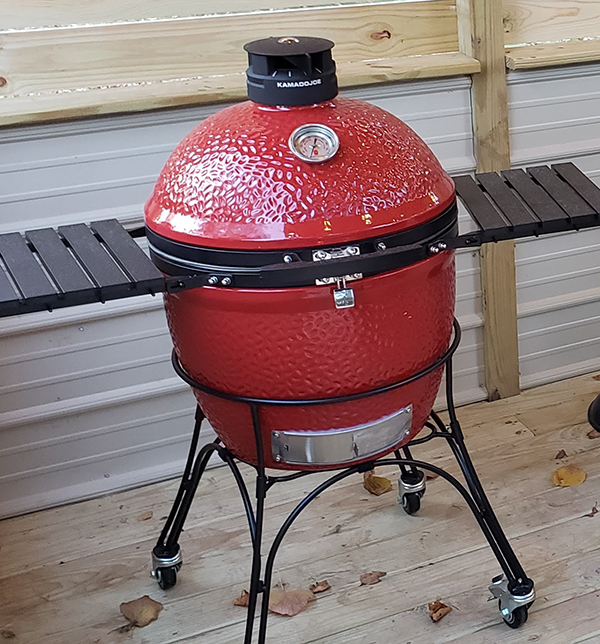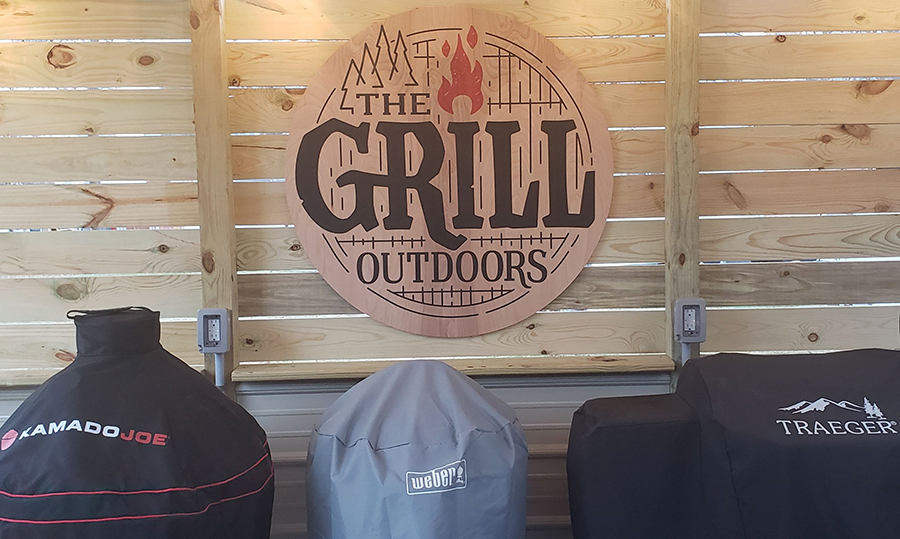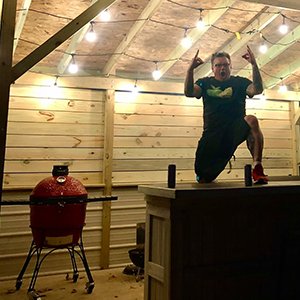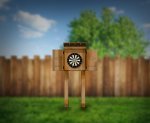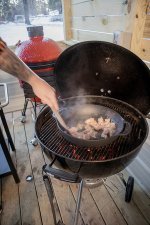Wood Pellet Grills: Great Smoke Flavor and "Forget It" Convenience
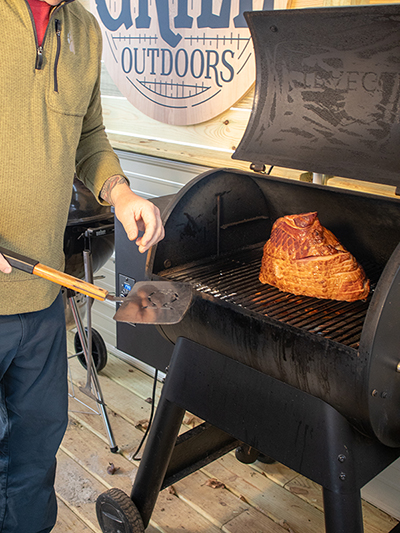 Smoking a ham on my wood pellet grill
Smoking a ham on my wood pellet grillThough they are getting very well known among grilling or BBQ aficionados, wood pellet grills and smokers are still a bit of an “unknown” to much of the general public. They have appeared on the backyard grill scene a bit more recently than kettle or ceramic grills.
Wood pellet grills have been around since the mid-1980s. Pellet grills burn real compressed wood to produce heat in your grill, in place of charcoal. Typically the wood pellets are stored in a hopper on the side of a metal, drum-shaped grill. They are fed by an auger mechanism into a firepot, located at the bottom of the grill. A temperature dial controls the speed at which the auger delivers the wood pellets to the firepot. A heat sensor in the grill communicates electronically with the controller to indicate when the desired temperature is reached. This technology allows you to establish a desired cooking temperature and to let the grill do the work of maintaining that desired temp. The newest models even have wi-fi technology so that you can check and adjust temperatures remotely!
A wood pellet grill primarily cooks through convection heat. A fan in the grill circulates the heat and smoke for even cooking, and there is a drip pan under most of the grilling grate cooking area. This system prevents flare ups from grease drippings and also contributes to the convection style of cooking because the heat and smoke have to flow around the edges of the drip pan and circulate around the top of the grill.
Is it cheating?
There is some good-natured debate among grill users about whether or not the “set it and forget it” temperature control of a wood pellet grill should be considered cheating, because it eliminates most of the “art” of tending to a fire and getting your food to the ideal cooking temperature. Personally, I don’t think it’s cheating — I think it’s smart to use the technology to your advantage! You can eliminate a lot of guesswork and can learn to get consistent results time after time.
I tend to use my wood pellet grill for most of my “low and slow” smoking meats, especially large cuts like briskets, ribs, hams, or pork butts. I love the low maintenance of being able to leave it for hours and maintain the temp (as long as I haven’t forgotten to keep the hopper full of pellets). I find it especially useful when hosting a large gathering, because it allows me to spend more time hanging out with my guests or cooking other foods. The ability to leave the grill for hours is also ideal when you have other household or backyard chores to do! You can get your other work done and then reward yourself with an awesome pulled pork sandwich.
How to choose your wood pellet grill
Of the variety of wood pellet grills on the market, I chose a Traeger because it is the original brand and was the clear industry leader at the time. I also had a few friends and relatives who personally recommended and allowed me to experience their Traegers, and once that happens, you’re sold. BBQ Queens has a nice history of pellet grills, if you’re interested to read more.
My grill is the Traeger Pro Series 22” pellet grill. It’s an older model now, but I have been very happy with it. There are three of us in my family, and this grill is usually the perfect size for what I need. Sometimes when hosting a larger party, I wish I had a bigger pellet grill — but for those 2-3 times a year, it would be hard for me to justify the cost of something bigger. My pellet grill can comfortably accommodate two pork butts or a brisket at one time, and that is just fine with me.
Besides size, one of the key factors in my model choice at the time of purchase was the durability of the frame and legs. When you have to repeatedly roll a grill in and out of your garage or other storage space, you will really appreciate choosing a sturdy frame, whatever brand you are buying. Lastly, one of the features I considered when purchasing was the availability of two separate meat probes, so that I could monitor the temps of two separate pieces of meat cooking at the same time.
Take the time to browse your options, and you will soon recognize which features might be important to you.
Pellet grills generally do not get hotter than 500 degrees Fahrenheit, so they are not ideal for searing the surface of your food. Despite that, I feel that the wood pellet grill can still do a great job with most foods. Some of the best burgers I have ever eaten have been cooked on my Traeger. Cook for 5-6 minutes on each side at 500 degrees Fahrenheit, and boom, delicious and juicy burger. Since I also own kettle and kamado grills that get hotter, I sometimes cook a pork chop, steak, chicken breast or bratwurst at a low, slow temp with the pellet grill, and then I sear it on one of the others. This way I get the best of both worlds: the smoke infusion and consistent temp from the pellet grill and the high, direct heat from the charcoal grill.
Into the woods
The wood pellets that fuel these grills come in many flavors and are made by a variety of brands. They are pretty commonly found at hardware and supply stores. I know that some backyard chefs are very particular about the brands of wood pellets they use, but I have used many brands and have not had a problem with any of them. I will say that I have sometimes seen brands for sale that are much cheaper than the common brands, and I have avoided those especially cheap ones. If your gut says don’t buy it, listen to it — and I think you will be fine. As for flavor, you can often find apple wood, cherry wood, hickory, mesquite, maple, oak, pecan, and others. I commonly use a “competition blend” that has a less distinct taste so that I don’t need to keep changing the pellets out of the hopper. It is important to keep both your pellets and your pellet grill dry and protected from the elements.
To recap, I strongly recommend a pellet grill if you love to have that great smoke flavor added to your food and you want to be able to cook without the “hassle” of managing a real fire. They are also superb for smoking meat at low temps.
Check out Related Pages below for other backyard grill types.
- Home
- Types of Backyard Grills
- Wood pellet grills

